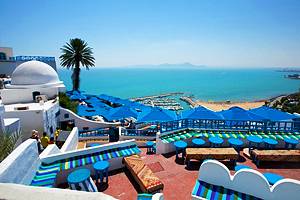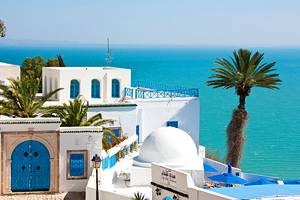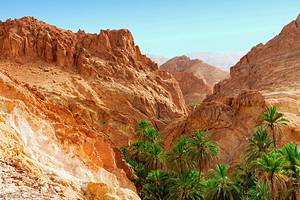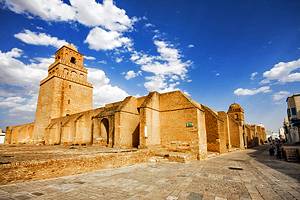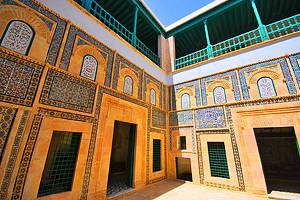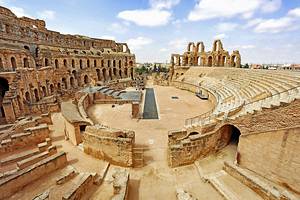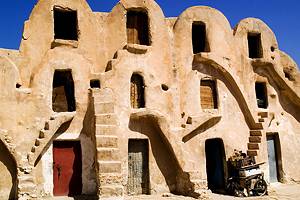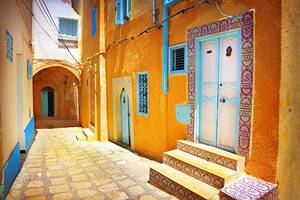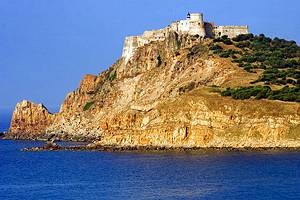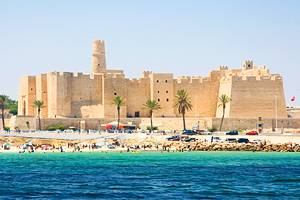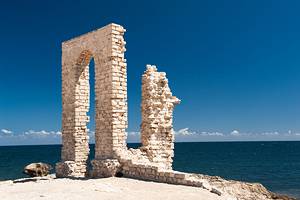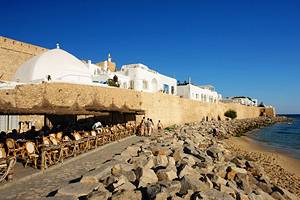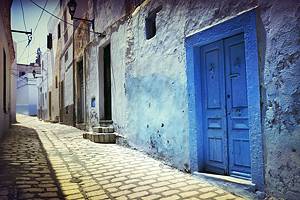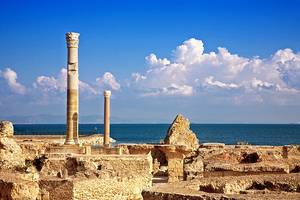Exploring Tozeur's Oasis: A Visitor's Guide
Tozeur's oasis (palmeraie) is the town's most prominent feature. This intensively cultivated garden area that rims the town's southeast edge, covers an area of 1,050 hectares.
It principally contains around 400,000 date palms, but there are also areas of fruit trees, shaded by the palms, including orchards of fig, apricot, pomegranate, and banana trees.
Roughly between 25,000 and 30,000 tons of dates are produced by Tozeur Oasis annually. The finest crop are the top quality deglet nour dates, which only grow on the tips of palm trees that have been well supplied with water and are feted by date connoisseurs for their aromatic, semi-sweet taste. Only about 1,000 tons of these dates are harvested from Tozeur Oasis annually.
If you've been exploring the stark beauty of the Sahara for a few days, a visit to this lush green and shady garden area provides a contrast to all that sand.
Although there are no actual tourist attractions within the oasis, a stroll, bicycle ride, or horse-drawn carriage ride along the oasis lanes, just to admire the gardens and soak up the peaceful atmosphere, remains one of Tozeur's top things to do for tourists in town.
Irrigation of Tozeur's Oasis

Some 200 springs and artesian wells (with a total flow of 700 liters per second) supply the oasis with water.
Most of the springs are near the Belvédère, where they join to form a river flowing through the oasis and petering out at its end, on the edge of the Chott el Djerid.
The water from the river and the artesian wells is channeled to the various land holdings within the oasis through an intricate network of little open channels, known as seguias, and in accordance with a complicated distribution system that still follows the ancient rules.
Imam Ibn Chabbat originally laid down regulations for the water distribution in a book written in the middle of the 13th century. Under this system, each holding of land, depending on its situation, size, and time of irrigation (morning, evening, etc.), is assigned a particular unit of time during which it is supplied with water through the seguias, all of which are of the same size.
This close control over the distribution of water is necessitated by the scarcity of the supply.
The artesian wells bring up water from depths of between 60 and 100 meters, but in recent years, the water table has been slowly but steadily falling.
The yield of the wells has been decreasing, and they are now giving place to modern deep wells, which tap deposits of fossil water at a depth of 600 meters - a supply dating from earlier geological periods which is not renewable.
Land Ownership in Tozeur

Land ownership in Tozeur is still based on traditional and rather antiquated concepts and structures.
Most of the land in the oasis belongs to no more than 60 families, who account for less than two percent of the population, and the Zaouia Tijaniya, a wealthy and influential religious brotherhood found throughout the Maghreb.
Only eight percent of the land belongs to smallholders, who work their own land and usually own no more than 50 palms.
The large landowners — many of them merchants or nomads, who are traditionally disinclined to work on the land — and religious brotherhoods own more than 1,000 palms apiece.
Their land is worked by sharecroppers (khammes), who retain between a tenth and a third (depending on the crop) of the harvest. The name khammes comes from khamsa ("five"), the croppers' average or traditional share being one-fifth.
This pattern of land ownership and employment developed over the centuries, when the caravan routes fell out of use and oasis farming remained the only means of subsistence.
The wealthier landowners bought up the impoverished smallholders' water rights, cut off their water supply, and finally acquired their land. The dispossessed peasants were then compelled to become their tenants. The share of the harvest they receive is sufficient only to meet the most basic requirements of subsistence.
Sightseeing

The main attraction of visiting the oasis is simply its shady, tranquil atmosphere.
The best way to visit is by bicycle, as the size of the oasis means that exploring on foot will only allow you to skirt a small section. Many hotels and shops in Tozeur hire out bikes at hourly rates.
Horse-drawn carriage rides along the oasis lanes are also a popular way to see the oasis.


